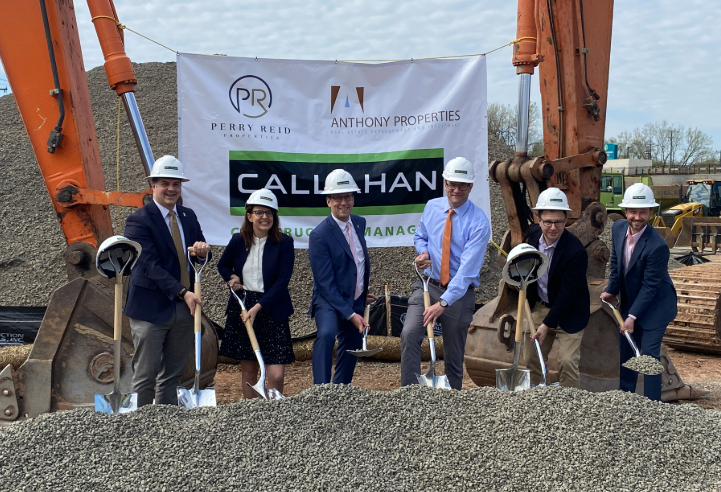News: Connecticut
Posted: March 17, 2011
Multifamily is considered the strongest most stable real estate investment
At the beginning of the year, as we shared our thoughts on the local multifamily markets in Connecticut and New England we wrote: "Capable investors who purchase properties in the near term will face the prospect of steady income gains and the potential for asset appreciation." This is indeed an exciting time in the new real estate cycle. Property values have strengthened as a result of improved fundamentals, low interest rates and emerging capital. It's a good time to be a seller with so much 'sidelined' capital looking for a home and multifamily is considered the strongest most stable real estate investment. The Connecticut apartment market bounced back strongly last year and is leading the region's real estate recovery. In general, occupancy levels have improved to almost-typical levels (New Haven was one of the best performing markets in the country last year); rental concessions are minimal or non-existent; and we anticipate healthy, positive rent growth and high occupancy throughout most markets as the spring rental season approaches.
With recovery in the job market nationally and locally as a principal driver of improved apartment occupancy, resurgent tenant demand for Class B/C units in most communities in Connecticut this year indicates the recovery in property operations has started to spill over from the "A" units where job losses weren't as prevalent or were the first to be reabsorbed. We anticipate that the apartment sector rebound will expand to include areas that were among the hardest hit in the residential market collapse (not surprisingly; areas that experienced the highest rate of job losses.) With demand strengthening and construction starts still lagging, developers are returning to building.
Interestingly, over the past few difficult financial years, newly constructed "A" product has flourished in high barrier I-95 corridor markets such as Stamford, Milford and New Haven. In spite of the credit crunch and perceived lack of capital, lenders actually helped fuel the rebound by financing new multifamily projects in Fairfield and New Haven Counties over the past couple years. Recent improvements in the local job market have positively impacted overall occupancy levels improving a property's bottom line and subsequent value. Debt, much of it older, over-leveraged CMBS still encumbers many apartment properties from "A" to "C" quality in the region. Servicers and lenders are beginning to assign brokerage and sell them off.
There's a changing and improving demographic where children of baby boomers that grew up with all the high-tech toys are now earning $75,000, $100,000 or more (tenants by choice) and they are capable of paying for and demanding well-maintained, high-quality apartments. In addition, the renter-by-necessity base will remain sizable as tougher mortgage underwriting standards discourage the movement of younger households to home ownership. Aging baby boomers becoming empty nesters will also constitute a large share of renters for both luxury suburban garden and urban high rise properties. In general, certainly with respect to "A" quality properties in primary/secondary markets, with little product in the pipeline - if you build - they (tenants) will come.
In New Haven County, vacancy was an extremely low 2.3% at the end of last year. As newly constructed units stabilize, we anticipate that vacancy in Fairfield County will decrease 70 basis points to below 5%, the lowest level in more than three years.
Multifamily properties in Connecticut are also beginning to trade on a value-add basis where the cash flow will benefit dramatically from an infusion of capital and market repositioning. With reasonable per unit values and strengthening fundamentals, lenders are also beginning to fund capital expenditures in addition to acquisition. Tenants benefit but also the community and it has historically been an important method of improving older apartment stock.
The small state of Connecticut is experiencing big interest from both private and institutional multifamily investors throughout the country due to the strength and anticipated growth of its apartment market. Class A properties with convenient access to commuter rail stations will generate the greatest interest but overall, strong, stable fundamentals, the supply constrained, high barrier nature of the state makes it highly desirable for multifamily investment. The strengthening economy will continue to push vacancy lower in New Haven, Fairfield and New London counties this year, solidifying the area's status as one of the top performing markets on the East Coast.
Steve Witten is senior director of the Institutional Property Advisors Group of Marcus and Millichap. He is based in New Haven, Conn.
Tags:
Connecticut
MORE FROM Connecticut
Highcap Group brokers $41.1 million sale of two building multifamily portfolio
Norwalk, CT Highcap Group has completed the sale of two luxury multifamily properties with a total of 120 units for a combined purchase price of $41.4 million.








